St. Augustine
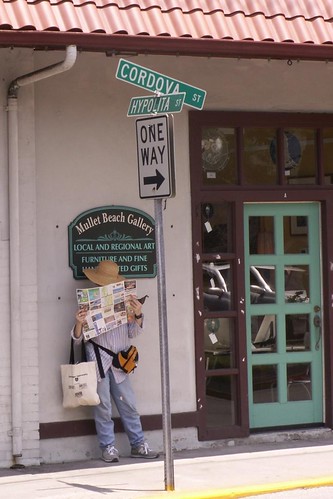
Mary checks our tour map.
Mary and I returned on Thursday night from a terrific but exhausting trip to St. Augustine, with a brief side-trip to Daytona Beach, where her sister-in-law was visiting. We joined about 30 other people from the camera club -- as I drafted this entry I was uploading 87 photos out of the 239 I took. I'll whittle down a selection to show here, but the full sets are at Flickr: St. Augustine Alligator Farm and Zoological Park and other St. Augustine sites. I have yet to upload several videos....
We left on the 15th, after scant sleep, and chose the longer, slower, scenic route, first driving through the Ocala National Forest on Rt. 40, then up the Atlantic coast on A1A. Gorgeous vistas. The sun was setting by the time we were on A1A, but we could still see the ocean to our right. Up ahead, a massive cloud bank that looked like a mountain range glowed with lightning from within.
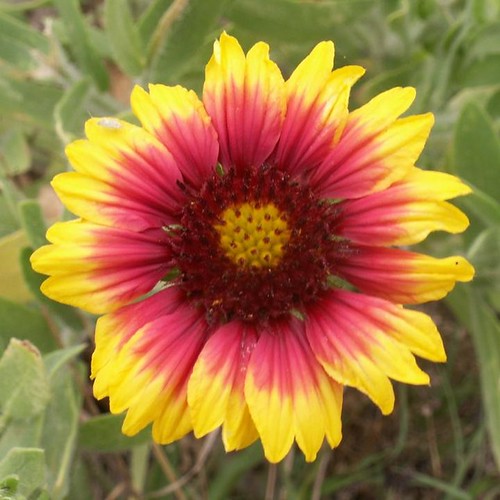
A flower growing wild by the side of Anastasia Blvd.
On the morning of the 16th we walked the roughly 2.3 miles (one-way) from our hotel to the Alligator Farm and back in the afternoon.
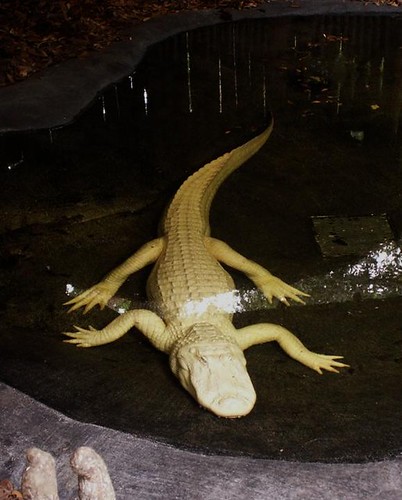
Established in 1893, the St. Augustine Alligator Farm and Zoological Park is listed with the National Register of Historic Places, and is the only zoo in the world to display all 23 species of crocodilians. It has matured from sheer tourist attraction to a bonafide research center and conservation resource.
The website says about albino alligators, "Glimpse these rare and mystical creatures from the bayous of Louisiana. There is a legend that those who gaze upon these beautiful reptiles will receive good fortune."
We were told ahead of time that these alligators look as though they're made of white chocolate. It's true. This one briefly lifted its head partly out of the water, resubmerged, shifted position a bit.
What wowed me most was the farm's world-famous rookery, where alligators and birds share a peaceful coexistence, since the gators eat animals that would normally predate on the birds.
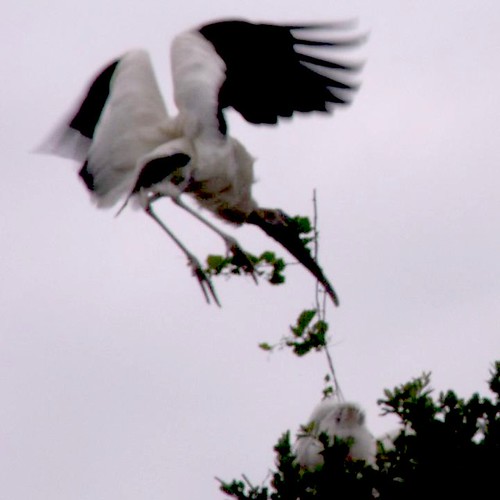
Wood Stork, Mycteria americana. I have sharper photos of this species, but catching this individual was a challenge. During the entire time we were there, it swooped back and forth over our heads, engaged in nest-building.
While walking on a boardwalk built over a swamp, we were surrounded by species that, as listed on a sign at the rookery, included Black-Crowned Night Herons, Cattle Egrets, Great Egrets, Green Herons, Little Blue Herons, Purple Gallinules, Roseate Spoonbills, Snowy Egrets, Tri-colored Herons, White Ibises, Wood Storks, and Yellow-Crowned Night Herons. (The species in bold are ones that I've photographed.) The sound alone was like something out of Hitchcock -- but unlike Hitchcock it was not frightening in the least, despite the gators beneath the boardwalk.
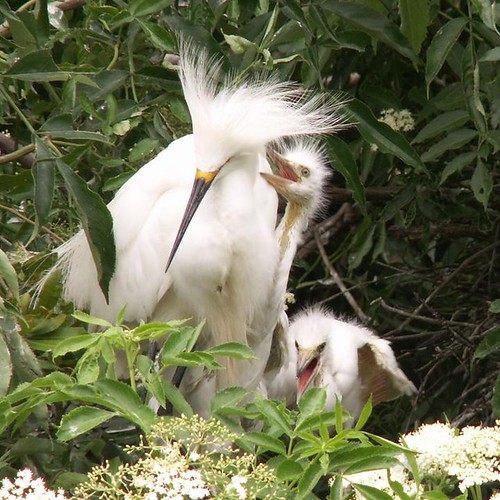
Says eNature.com, Snowy Egrets (Egretta thula) "often feed by sprinting rapidly through shallow water, chasing schools of minnows and shrimp. This habit makes them easy to identify without seeing their bills and feet. Often several Snowies will be found feeding together, and it is thought that their white color, visible at great distances, lets other birds know where the feeding is good; the sprinting behavior also attracts other birds that then join in the feast. There is evidence that members of a pair of Snowy Egrets, like other large waders, cannot recognize one another except at the nest. Even there, a bird arriving to relieve its mate must perform an elaborate greeting ceremony in order to avoid being attacked as an intruder. During this display the plumes on the head are raised and the incoming bird bows to the one that is sitting. Appeased by this display, the sitting bird leaves and the other takes over."
That night the group of us had dinner at Salt Water Cowboys, a restaurant perched above wildlife-laden salt marshes flanking the Intracoastal Waterway. Its rustic interior features handmade willow twig furniture, old wooden floors, rusted tin ceilings, and gator and snake skins hanging on the walls. Mary ordered cooter (a river turtle) served in fritters. I ordered the less adventurous scallops.
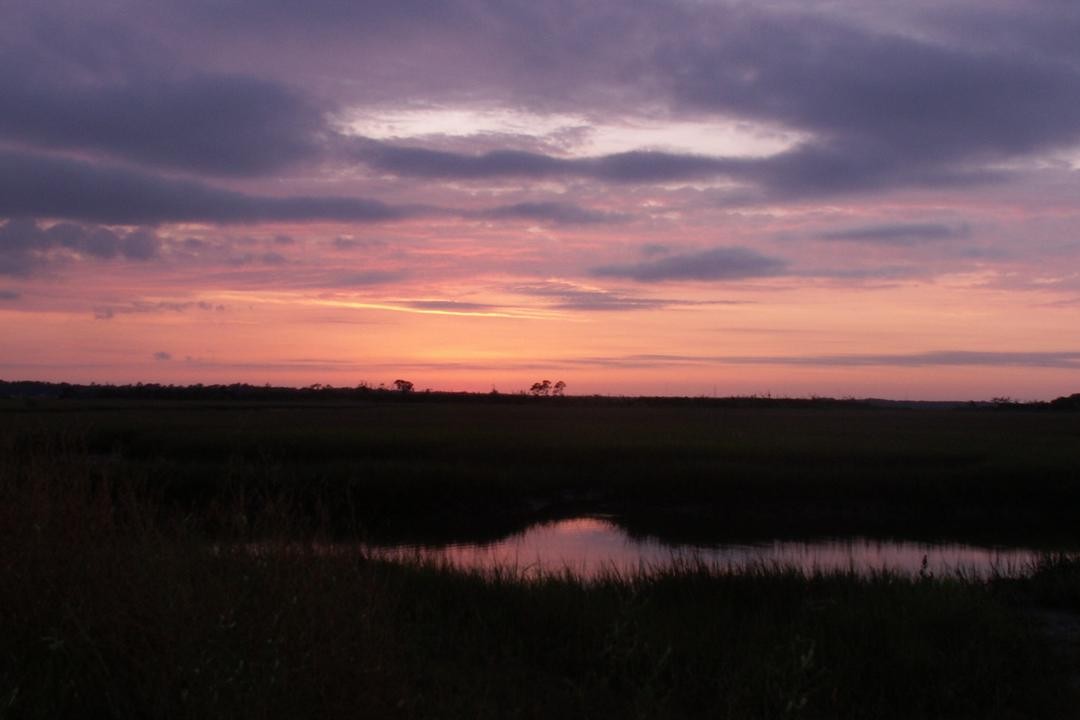
Several of us made a beeline for the door when we started noticing a great sunset through the picture windows. Made me glad I'd brought my tripod to the restaurant. By dark the clouds had cleared. Mary and I stargazed before we drove back to the hotel and thought we spotted an artificial satellite. Its time of appearance and heading seemed to fit Heavens Above's record of the Lacrosse 5 satellite, launched on April 30, 2005, for US military reconnaisance.
On the 17th our group took an Old Town Trolley tour. Mary and I shared a last meal with the camera clubbers, then explored some of the historic district and the Castillo de San Marcos.
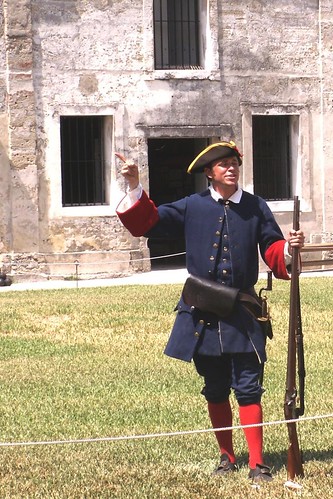
Park Service Ranger in Spanish military uniform, circa 1740.
We also reserved an additional night at the hotel. After the drive to and from Daytona Beach, we didn't get back to our room until around 3 AM on the 18th. We'd returned to St. Augustine because we wanted to see more of the city -- though didn't expect to be quite so bleary-eyed.
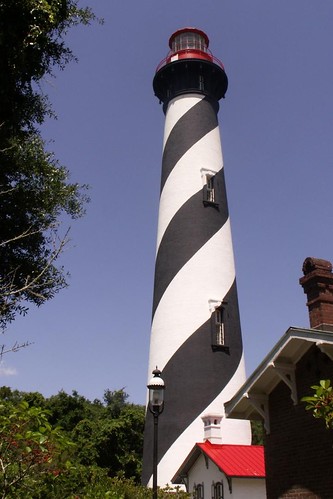
Originally we planned to climb to the top of the lighthouse (as we've done with a number of towers, including the Statue of Liberty, Bunker Hill Monument, and Provincetown Pilgrim Monument), and to take in the Washington Oaks botanical garden, but we were functioning on a severe sleep deficit by this time and wanted to get home before dark.
I did take a couple more shots on the 18th, but we decided to leave other attractions for our next trip there. We were ready to go back home to the cats, and to our own bed. I pulled into our driveway around 7 PM. Mary unloaded the car, while I started on The Big Photo Transfer.
More images to come....
PS: We returned home to a "blessed event."
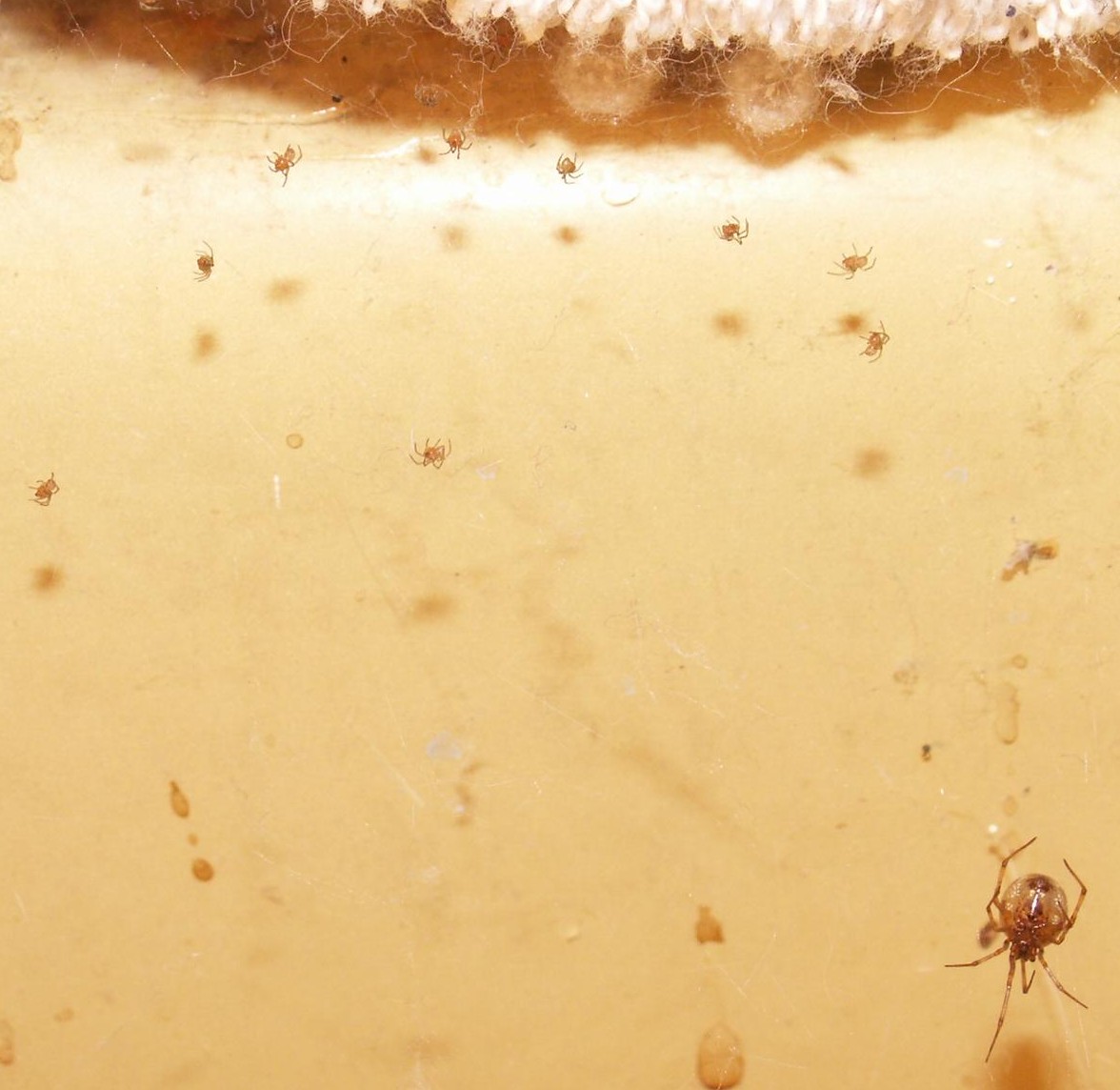
The morning of May 20 I was setting up to make a pot of coffee, next to our non-used (by us), coffee-stained, to-be-replaced kitchen sink, when I saw tiny dots in our resident American House Spider's web (Achaearanea tepidariorum, family Theridiidae (Comb-footed spiders)). I hadn't seen those dots when we'd left five days earlier on our St. Augustine trip.
I grinned, and called out to Mary, "I think I see spiderlings!" Mary, who is near-sighted, confirmed it. (Clicking on the image and then the magnifying glass will give a larger view.)
Mama spider relaxes at lower right, while nine spiderlings hang in the web. Above them, the two bumpy white balls nestled just beneath a white towel are egg cases.
Mary commented that Mama's body seems a bit more translucent. I've never before seen those clusters of white dots on the sides of her abdomen -- but this is the best focus I've been able to get her in. I used a combination of overhead light, spotlight, and flash for this one. Back on May 9 I had seen her with what I believe to be a male, in "Waiting for the Pitter Patter of Little Spiderlings".
By 10:30 AM on May 21, the spiderlings were nowhere to be seen and a third egg case is now by the other two. I don't know whether they toddled off on their own or (as I suspect) were eaten by Mama.











1 Comments:
Wonderful travelogue... every photo priceless - couldn't say which one I like best! The one of Mary had me laughing, but that flower, wow, and the croc, oh and the spiderlings, quite a journey!
Post a Comment
<< Home